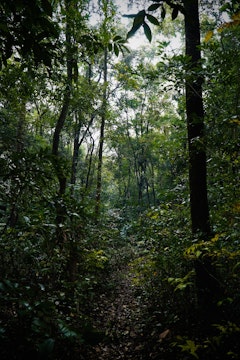The Sonic Landscape of Chakpa Phayeng
Chakpa Phayeng is a unique and historically rich village in Manipur, North East India, known for its deep cultural heritage, ancient traditions, and harmonious relationship with nature
Chakpa Phayeng is a unique and historically rich village in Manipur, North East India, known for its deep cultural heritage, ancient traditions, and harmonious relationship with nature
It has a rich biodiversity, with a variety of flora and fauna that thrive in its subtropical climate. It is recognized as India’s first carbon-positive village due to its sustainable practices. The village’s vibrant heritage is reflected in its unique architecture, music, rituals, and deep connection with nature, making it a rare cultural and environmental treasure.
It is one of the last surviving strongholds of the Chakpa community, an indigenous group with a distinct identity that predates the influence of Hinduism in Manipur. The people follow traditional Sanamahi religious practices, worshiping local deities and nature spirits. Their lifestyle is deeply connected to nature, emphasizing community living, self-sufficiency, and ecological harmony. The village celebrates local festivals with music, dance, and communal prayers. These rituals are deeply spiritual, often centered around nature worship and ancestral reverence.
The soundscape of Chakpa Phayeng is a rich tapestry of natural and cultural elements. The village resonates with the sounds of birds, rustling leaves, and the occasional call of wild animals from the nearby forests. Traditional folk music and chanting, often accompanied by indigenous percussion instruments like the pena (a one-stringed instrument), are central to their rituals and storytelling. During festivals, the rhythmic beats of drums, the hum of ceremonial prayers, and the communal singing of folk songs fill the air.
The harmony between natural sounds and cultural expressions makes Chakpa Phayeng a place where history, spirituality, and nature exist in perfect balance.











